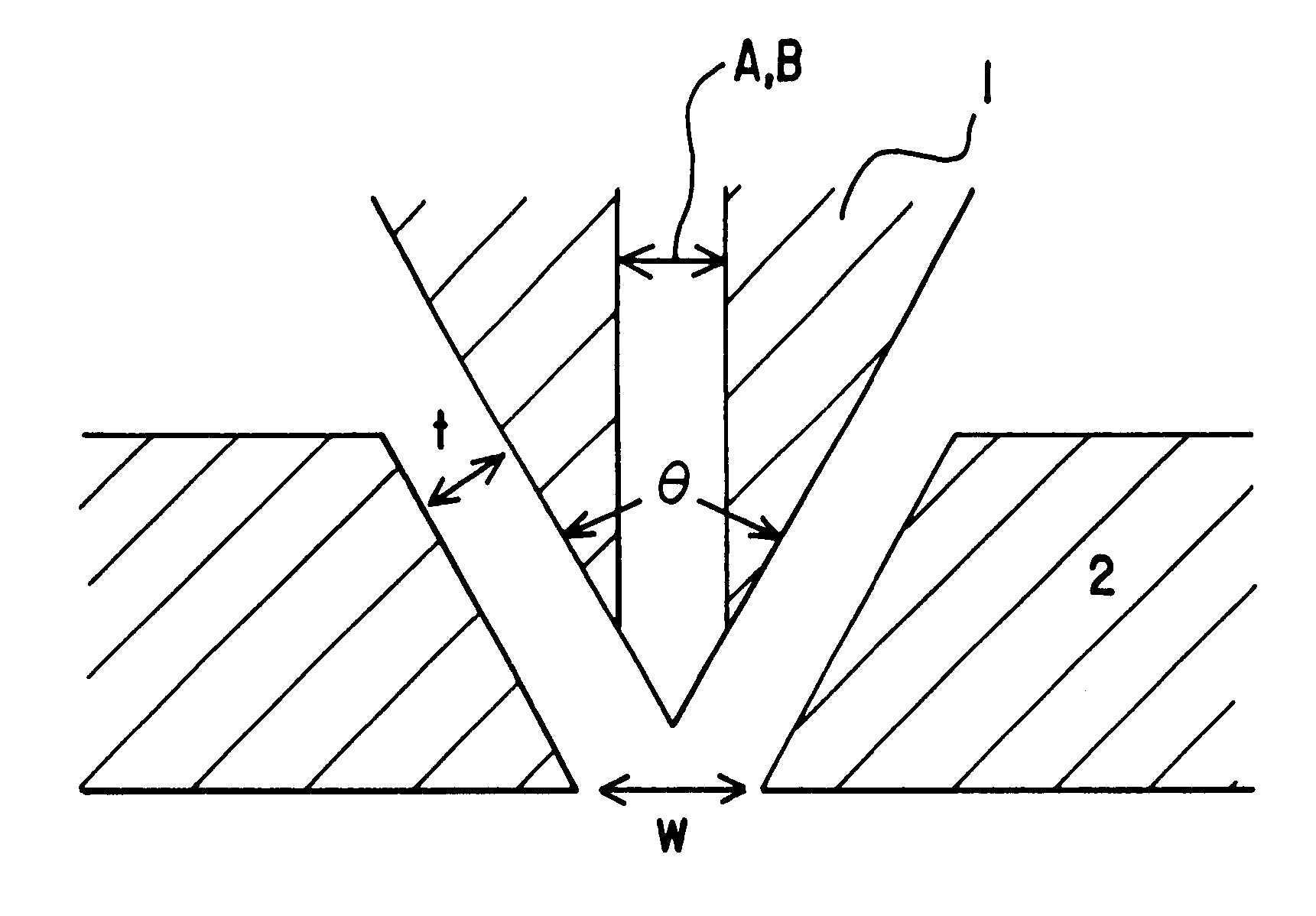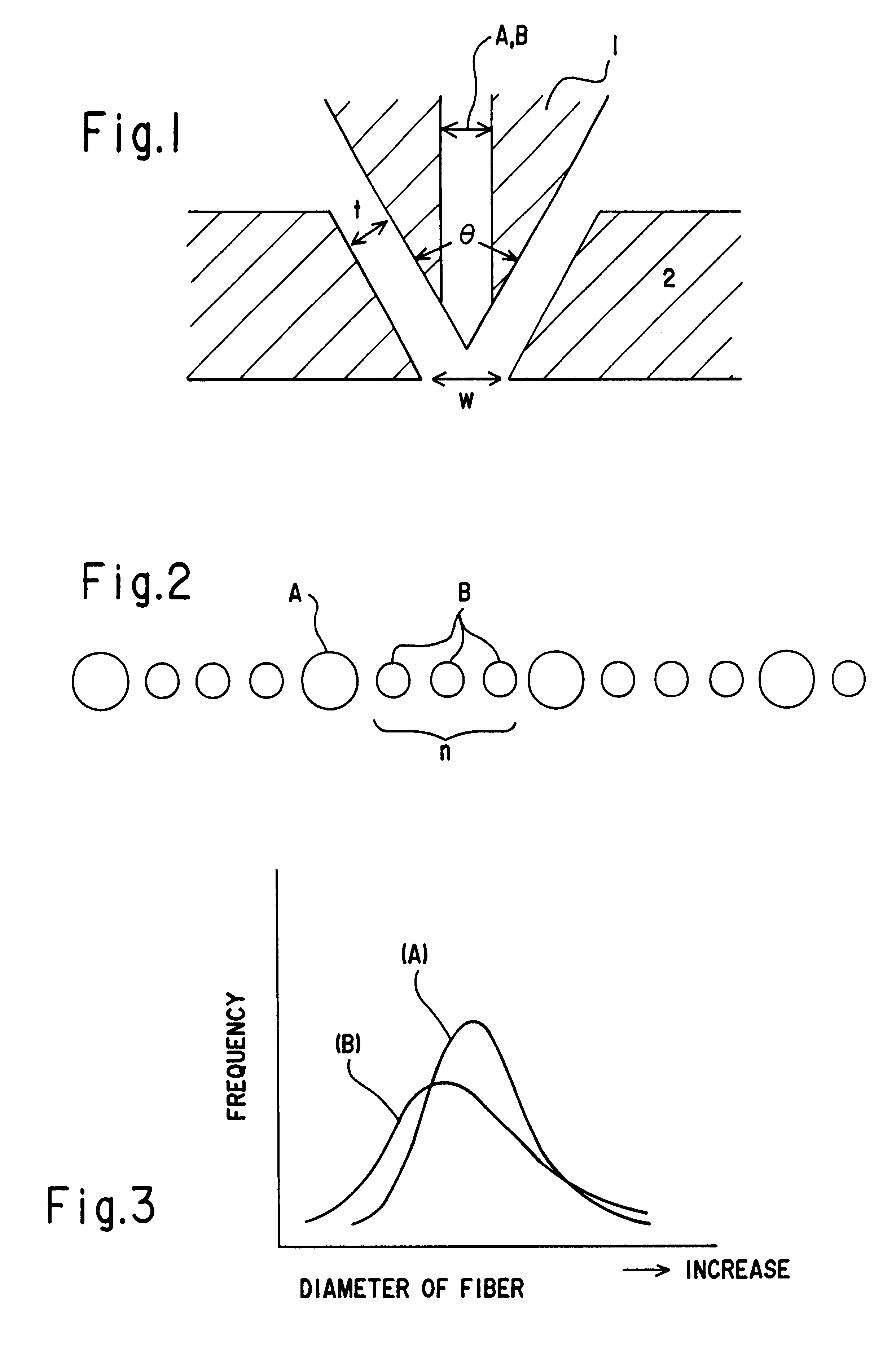Melt-blown non-woven fabric, and nozzle piece for producing the same
a technology for nozzles and non-woven fabrics, which is applied in the direction of melt spinning methods, weaving, filament/thread forming, etc., and can solve the problems of increased production cost, increased service life, and difficult processing control
- Summary
- Abstract
- Description
- Claims
- Application Information
AI Technical Summary
Benefits of technology
Problems solved by technology
Method used
Image
Examples
example 1
The same procedure as used for COMPARATIVE EXAMPLE 1 was repeated, except that the nozzle piece was replaced by the one equipped with nozzles A (hole diameter Da: 0.6 mm) and nozzles B (hole diameter Db; 0.4 mm), 2 of which were disposed between the two adjacent nozzles A, to form a non-woven fabric having an average fiber diameter of 5.6 .mu.m.
Its fiber diameter and fiber diameter distribution were determined by the same procedures as used for COMPARATIVE EXAMPLE 1. Its fiber diameter distribution was compared with that of the fabric prepared by COMPARATIVE EXAMPLE 1, to judge the difference. The number of shots and also filtration efficiency of the non-woven fabric were measured In the same procedures as used for COMPARATIVE EXAMPLE 1. The results are given in Table 1.
examples 2 to 3
, and Comparative Examples 2 to 5
The procedure as used for COMPARATIVE EXAMPLE 1 was applied for making each of these EXAMPLES and COMPARATIVE EXAMPLES, as shown in Table 1, the nozzle piece was replaced by the one equipped with nozzles A (hole diameter: Da) and nozzles B (hole diameter: Db) of varying hole diameter ratio R (Da / Db) and number (n) of the nozzles B between the adjacent nozzles A, to form a non-woven fabric.
[Table 1]
As shown in Table 1, the nozzle piece of the present invention which is equipped with 2 or 4 smaller nozzles B set between adjacent larger nozzles A(EXAMPLES 1 to 3) gives a non-woven fabric of wider fiber diameter distribution and longer service life than the one which is equipped with nozzles of the same hole diameter (prepared by COMPARATIVE EXAMPLE 1). In case when nozzle diameter ratio R is set at 1.2, which is below the range of the present invention, the non-woven fabric has a narrower fiber diameter distribution and hence shorter service life, altho...
PUM
| Property | Measurement | Unit |
|---|---|---|
| hole diameter | aaaaa | aaaaa |
| Da/Db | aaaaa | aaaaa |
| Da/Db | aaaaa | aaaaa |
Abstract
Description
Claims
Application Information
 Login to View More
Login to View More - R&D
- Intellectual Property
- Life Sciences
- Materials
- Tech Scout
- Unparalleled Data Quality
- Higher Quality Content
- 60% Fewer Hallucinations
Browse by: Latest US Patents, China's latest patents, Technical Efficacy Thesaurus, Application Domain, Technology Topic, Popular Technical Reports.
© 2025 PatSnap. All rights reserved.Legal|Privacy policy|Modern Slavery Act Transparency Statement|Sitemap|About US| Contact US: help@patsnap.com


